For a video review of the 740Le in Malaysia, click here.
The idea of going the hybrid route in a flagship luxury sedan may come across as odd, especially to the buyer who can afford such an item and has no considerations about fuel consumption, but it’s really not, given the way the world works now. Environmental friendliness is everything these days, and so not even range-topping products are immune to the workings of that particular siren song.
It’s inescapable, the green agenda, and allied to downsizing, the need for improved, more efficient mechanisation has become integral to workings on an ever-widening line. Fighting on all fronts means the upper spectrum has to get involved as well, and it’s perhaps even more importantly so that it does, because there’s no better means to highlight that the development has achieved the necessary maturity and desired sophistication than by having it plonked into a range-topping product.
Initially slow to get into the hybridisation game, BMW has more than caught up, especially from a local perspective. With three models on the roster (X5 xDrive40e, 330e and i8), it’s already ahead of Mercedes-Benz in the number of offerings it has in its national line-up. The count is set to increase to four with the arrival of the 7 Series plug-in hybrid, which will be making its official Malaysian debut later tonight.
Just how does Munich’s line leader measure up as a hybrid, and how does it compare to its petrol-only sibling? A drive in an 740Le xDrive iPerformance variant in Germany offers the pertinent answers.
Like with the X5 and 3 Series PHEVs, there’s very little to draw attention to this one’s leanings from an exterior viewpoint. Aside from the model badging on the rear lid, specific design cues to denote the hybrid are kidney grille bars embellished with blue accents, eDrive markings on the C-pillar and i logos on both front fenders as well as the unmissable flap cover of the charging port, located on the front left fender.
Underneath the hood, there’s the familiar blue strip and eDrive lettering to be found on the engine cover, and inside, it’s all subtle yet again, with eDrive door scuff plates and the mode selector switchgear – along with associated readouts in the instrument cluster – helping to distinguish the hybrids from their petrol siblings.
As is the case with 7 Series models, the hybrids have no shortage of individualisation options, with a number of wheel choices (it’s likely that the Malaysian car will come with the same five twin-spoke design as that seen on the 740Li) and packages to be found. For the latter, there are M Sport, Design Pure Excellence exterior/interior and BMW Individual Design Composition options.
Inside, standard equipment for the hybrid includes a BMW Display Key, a ConnectedDrive navigation package, smartphone integration with a wireless inductive phone charging feature, a six-colour Ambient Light interior lighting system, an iDrive operating system with a touchscreen function for the Control Display and the automaker’s familiar gesture control feature.
The 7er plug-in hybrid family consists of three iPerformance variant types, all bearing the same 740 model designation with an e suffix. The starting point is the standard G11-based 740e, followed by the extended-wheelbase 740Le, with the range-topping version being the 740Le xDrive.
No change in overall dimensions from their regular petrol siblings – like the latter, BMW Malaysia will be introducing the long-wheelbase version of the hybrid 7, and the PHEV version of the G12 measures in at 5,238 mm long, 1,902 mm wide and 1,479 mm tall, with a 3,210 mm-long wheelbase, exactly the same as the petrol Li variants currently on sale here.
There are differences in kerb weight vis-a-vis the petrol version, but considering the size of the car – and aided by the lightness of BMW’s Carbon Core construction for the chassis – it’s been kept very tidy. The 740Le weighs in at 2,015 kg, an increase of 170 kg over the 740Li (1,845 kg), which is actually less than the difference between F30 3er petrol and hybrid versions. Loaded with xDrive, the 7er hybrid still manages to balance the scales at a very respectable 2,075 kg.
The same powertrain/drivetrain configuration is to be found across the entire model range. The combustion engine is a B48 2.0 litre BMW TwinPower Turbo four-cylinder unit, which also equips the 330e, the latter offered in a lower state of output tune.
On the 7er hybrid, the unit pushes out 255 hp (or 258 PS) at 5,000 to 6,000 rpm and 400 Nm at 1,550 to 4,400 rpm, identical numbers to the B48 in the petrol 730Li. A supplementary synchronous electric motor – integrated into a ZF-sourced eight-speed automatic transmission with Steptronic – offers a maximum output of 111 hp (or 113 PS) at 3,170 rpm (rated output is 73 hp) and 250 Nm of twist from zero to 3,170 rpm.
Total system output is 322 hp (or 326 PS) of power and 500 Nm of torque. In figurative terms, this compares very favourably to that pushed out by the petrol 740Li. The latter’s B58 3.0 litre six-cylinder lump also provides an identical 322 hp, but has lower torque output at 450 Nm. The 740Le’s numbers are also ahead of the 313 hp/450 Nm running off the X5 hybrid (which runs a N20 2.0 litre mill), in case anyone’s taking note of such bits.
The 7er hybrid has a top speed of 250 km/h, and can run up to 140 km/h in EV mode. There are some differences in other performance figures for the three models, but these concern acceleration times and are marginal – the 740e does the 0-100 km/h sprint in 5.4 seconds, while the 740Le does it in 5.5 seconds. The 740Le xDrive – despite being the heaviest of the trio – shades the rear-wheel drive offerings by a whisker, managing the run in 5.3 seconds.
It does pay for it in electric-only operating range. Based on the NEDC test cycle, the 740Le xDrive is capable of 41 to 45 km of electric travel, while the two non-xDrive models have a 44 to 48 km range (depending on specified wheel and tyre sizes).
While this is a jump up from the on-paper 31 km offered by the X5 and 37 km available on the 330e, potential users should temper their expectations of what the 7 Series hybrid can actually deliver in real-world use. Likewise, the quoted NEDC cycle fuel consumption figures of 2.0 to 2.5 litres, which is more likely than not to prove as elusive as a unicorn.
Though a range as such wasn’t offered, we can look at the 330e to provide an estimation of sorts. That quotes 22.5 km of actual usable range as a more realistic figure, and actual use – from the samplings of it thus far – reflect this quite accurately. With the 7er hybrid, around 30 km of real distance coverage should prove a repeatable act, but we’ll take a closer look at this aspect when a local mule becomes available for evaluation.
Like the rest of the automaker’s hybrid range, this variation of the Seven features a lithium-ion battery, but it has the best numbers of the lot. The refrigerant-cooled 351 volt pack has a gross capacity of 9.2 kWh (net capacity, 7.4 kWh), ahead of the 9.0 kWh on the X5, for example. Charging time – with a BMW i Wallbox – is approximately two hours and 40 minutes at a Level 2 charge rate of 3.7 kW (16A/230V line).
The battery pack, developed specifically for the 7er hybrid, is accommodated underneath the rear seat bench in a space-saving position, and offers a level surface area for the boot. In terms of capacity, it’s down from the 515 litres available on the 740Li, but is still good for 420 litres, a decent volume.
Aside from Driving Experience Control, with its Comfort, Sport, EcoPro and Adaptive drive modes, there are three operation modes available under the eDrive umbrella – they don’t differ from the that found on the rest of Munich’s hybrid offerings, so there’s no need to delve into them in great detail.
As standard, the default setting is Auto eDrive, which utilises both engine and electric motor for movement, and adjusts how the hybrid function intervenes. The next mode is Max eDrive, in which the car runs on pure electric power, the range and duration being dependent on the available level of charge in the battery.
The final is Save Battery, which is known here as Battery Control. With this, the car runs on engine power alone and enables the battery’s level of charge to be replenished or kept for use later on in urban surroundings.
There are some differences in this one compared to the system on the 330e – here, the mode allows the charge of the high-voltage battery to be set manually, and a value between 30 and 100% of maximum charge can be targeted. The latter addresses the general, on-the-move 50% recharge cap placed on the 330e, and matches the Mercedes-Benz hybrid system in being able to top off the battery to full via the engine at any point in time, if so chosen.
The hybrid was sampled in Munich last year as part of the automaker’s 2016 Innovations Day event. The wide-ranging scope of the programme – which also involved BMW Connected and the updated 94 Ah i3 – meant that time spent with the demonstrator, a 740Le xDrive, was limited to a 50 km or so hop between venues. It nonetheless provided the most enjoyable experience of the day.
No surprises as to why. The 7 Series in its latest iteration is quite the accomplished luxury sedan. As a limousine, it’s a fundamentally well-fleshed out product, but there’s also a studious appeal in how it goes about presenting its wares from behind the wheel.
Handling isn’t supposed to be a large vehicle’s forte, but the 7 Series has always baulked that belief, especially so over the last couple of generations. With the G11/G12, that sense of drivability has been upped by a couple of notches, as highlighted by the regular 740Li. Response to steering input is crisp, and there’s a good flow in how the car threads corners together. Best of all is how it masks its bulk from a driver’s perspective – the perceived signature is actually far smaller than you’d first assume.
The hybrid continues the excellent work. It’s not as sharp as the petrol, with the extra mass it has to haul about inevitably blunting some of the dynamic scope, but the xDrive offsets this to a degree, and in truth it’s something most drivers will never even take notice of.
By and large, the 740Le xDrive drives very capably, and in Munich, the mule – which was kitted with the optional Integral Active Steering – never came up short or lacking the few times handling questions were asked of it.
It’s all secondary, of course, handling aspects, given that most LWB vehicles – especially in these parts – aren’t going to be driven by their owners, what more in hard fashion, and so, on to the burning question: is the eDrive system a valid alternative to its petrol-only sibling in terms of performance and overall presentation?
It is, matching the petrol in just about every aspect you can think of, save perhaps in outright smoothness and resolution. The weight penalty that shows up in handling doesn’t appear when it comes to accelerative push – the hybrid (which is faster) feels fast off the line and is especially keen from the midband on. Meanwhile, electric-only operation has a good, progressive feel about it, and the system remains tractable under load, even with an eager right foot.
While eDrive feels more cohesive – and intrinsically silkier – in operation compared to the equivalent Mercedes system, the hybrid 7er’s mixed powertrain isn’t quite as seamless as the 740Li’s solitary drive source.
On their own, each of the combination partners cannot be faulted, but switching between electric and engine operation remains a perceptible business. As is the case with the 330e in relation to the 330i, transitions still make themselves known, though the system’s changeovers feel less noticeable than those on the hybrid F30.
Ensconced at the back, such patterns become less discernible, largely forgotten or taken notice of as the miles pile on, which was the case during the second half of the drive session. Like its petrol sibling, the rear of the hybrid is a very good place to be, with seat comfort being exemplary. As expected, ride quality coming off the two-axle air suspension with automatic self-levelling and Dynamic Damper Control was flawless on well-surfaced German roads.
As for trimmings, the 740Le xDrive mule in Munich was fully decked out, with optional Executive Lounge seating, a Sky Lounge panoramic glass roof and adaptive BMW Laserlight headlights to be found. The latter two items should be marked as being on for the local car, which we understand is likely to mirror the specification level of the Malaysian 740Li.
To recap, the kit on the current petrol variant includes a Design Pure Excellence exterior package, 19-inch five twin-spoke alloys, quilted pattern Nappa upholstery, a 16-speaker, 600 watt Harman Kardon sound system with nine channels of amplification and a rear entertainment system with two 10-inch display screens (operated via a BMW Touch Command seven-inch touchscreen tablet), among other things.
The arrival of hybridisation in the 7 Series marks another big step for the nascent but rapidly evolving technology, showing that outputs can be retained – and even improved – while ably addressing the issues of downsizing, fuel consumption and emissions. All this, without any real sacrifice in finesse.
An engineering marvel, the hybrid gives nothing away to its petrol-only sibling in terms of performance, lagging slightly behind only in outright handling and in cargo carrying ability. The first aspect isn’t really going to figure in just about every equation, and the second won’t really be missed unless you’re in the business of carrying trunkloads daily.
If it plays out as expected, there’ll be absolutely no shortchange in equipment levels from the 740Li either, but the clincher won’t be any of the above. That the current hybrid tax incentives in place will also bring about a lower asking price for entry into the luxury realm will undoubtedly be the thing that seals the deal for potential 7 Series customers.
All the goodness of the 740Li, but at a significantly cheaper price. Surely nothing to argue about then, and buyers can even revel in the fact that they’re doing their bit to help the planet while lapping up the luxe, a kilometre at a time.
Looking to sell your car? Sell it with Carro.

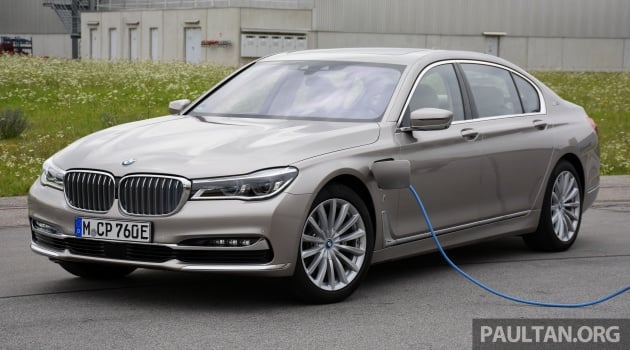
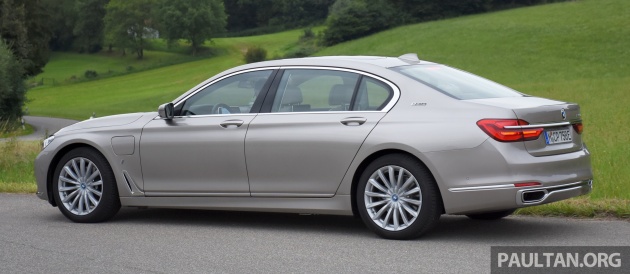




















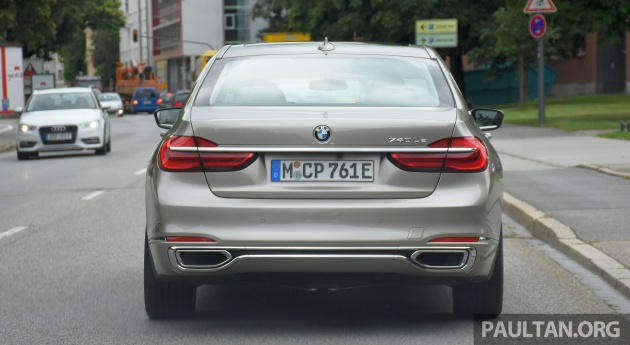
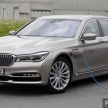
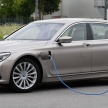
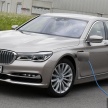
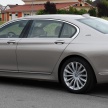
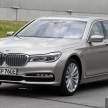

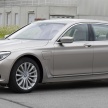
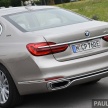
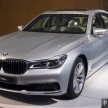

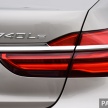
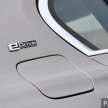
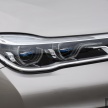
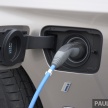
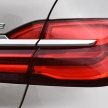
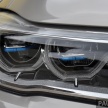
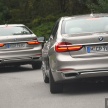
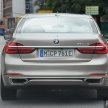
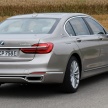
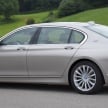
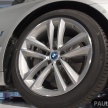
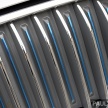
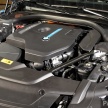
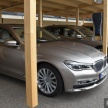
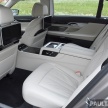
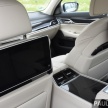
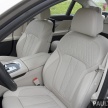
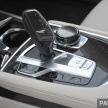

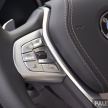
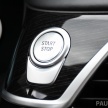
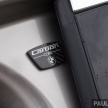
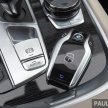
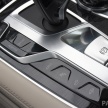

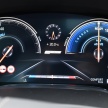
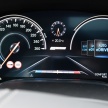
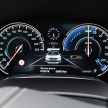
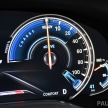
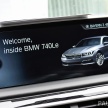
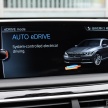
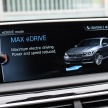
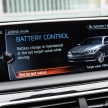
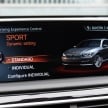
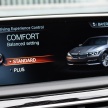
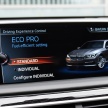
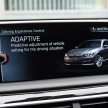
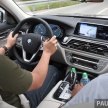
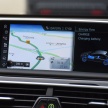
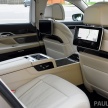
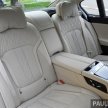
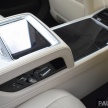
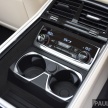
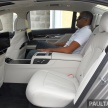
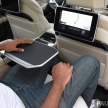
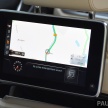
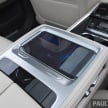
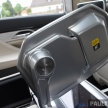
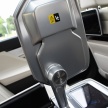
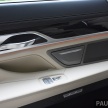
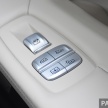
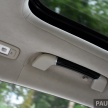
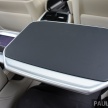
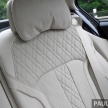
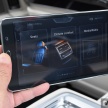
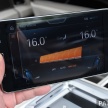
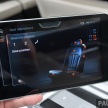
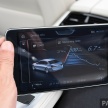

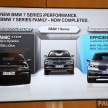
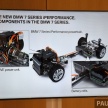
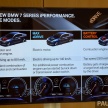
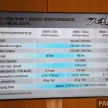
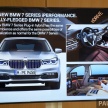
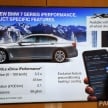










Buy 2nd hand 380K
How 2 buy 2nd-hand when there is NONE
Even the BMW 7 series is going for hybrid now, learning the trend from our Prius. Everyone knows they won’t go wrong with Japanese cars, especially Toyota.
If is proce below 450k ckd, it will sell like crazy
Look at the BMW X5 owners. They bought at Rm588k. Then BMW introduced the X5 Plug In at RM388k. Overnight, they lost RM200k. Now, they cannot even sell their 1 year old X5 for RM300k. Be careful. CRV, Accord, Altis and Myvi are all coming out with hybrid engines.
Those current BMW 730Li and 740Li owners gonna cry…
Aint no body goina cry. Wait till you try driving the 740Le then u comment again. I would rather pay a premium and drive hassle free without engine being started and stop out of the sudden. Besides, it needs to be charged fully to expose its full potential.
Anyway, my uncle just bought 740Li less than RM500k and he is enjoying to the max! Nothing comes close to having fun driving a bigger displacement.
Then they remember theyre rich and suddenly start to smile again
No problemo. Easy come easy go.
It simply doesn’t make any sense to bring this car here. Those who can afford this car won’t bother fuel cost.
Firstly, it’s an amazing feeling cruising around on electric power. No engine sound, no vibrations. That’s something luxury car owners want.
Secondly, the tax exemptions allow you to load up on the specs while offering cheaper price.
Don’t presume to understand luxury car buyers when you aren’t one.
Those who arent capable trying to dictate the actions of those who are. Deswai those who arent, can never reach the level of those who are. Now we know why we can never be success.
U miss the FUL at the end. U are right, people who troll here are NOT successful.
A boomerang comes back. Remember that
It’s not really odd considering those who can afford it has their own pride and image to conserve. Mostly are celebrities who always chanting about going green and reduce carbon emission thing.
Only used as company car that wants to portray a green image and park at valet or green car zone. Also can be used by Logan to ferry customers around.
Betui..Deswai i bought S400 Hybrid.
Hi Anthony. Just to update that the 330e is now chargeable up to 90% in save battery mode.
Ah, is that so? That technical update makes for quite a bit of difference. Thanks for the heads up, I’ll be sure to check that out.
No worries. It does make a difference especially when travelling outstation now. The charging rate cruising at 110-120kph is about 1-1.5km/%.
I had no idea the X5 40e was using the old N20 engine. Always thought it had the new B48, which is also inside the 330e. Quite odd they did that.
Odd, the article exudes the usual flair of Anthony’s writing but there’s this subtle hint of boredom/jadedness as I read through it. Anthony not into PHEVs?
That aside, the first photo of the car plugged in with that teal colored cable is cute!
Please compare S400 Hybrid and 730Li,
price around $600K, which is better ?
I like Mercedes, but wife prefer BMW.
I once asked this question, imagine you are happily charging your beloved hybrid at night during a thunder storm (which are plenty in Malaysia) and suddenly, KABOOM!!! Whole house kena petir and blackouted…can picture the horror? I once asked both BMW and Merc SAs, no one can give me a straight answer whether the warranty cover power surges…I was told by BMW there’s a surge protection built is in but we all know better….a single lightning bolt has between 100 million to 1 billion volts and 10-100K amps…imagine what it can do to all the electronics in your car and the repair bill…which is nowadays essentially a computer on 4 wheels…has anyone ever asked this question?
Use powerbank charge la ayo